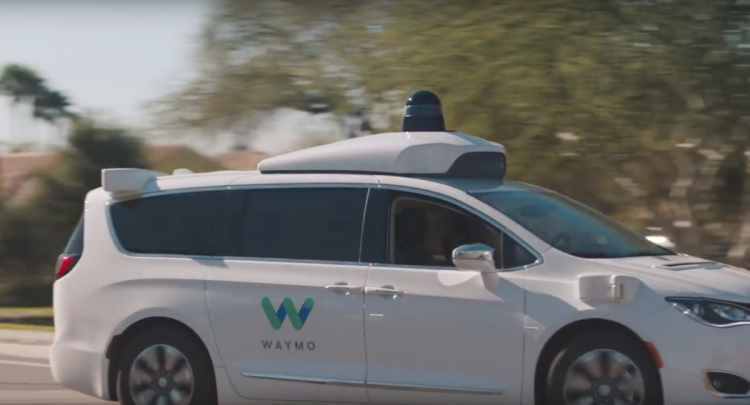Watch all the Transform 2020 sessions on-demand here.
During Tesla’s inaugural Autonomy Day on Monday, CEO Elon Musk spoke about an idea first articulated in a document published three years ago — an autonomous taxi service built on the back of Tesla’s growing Model 3 and Model S network. It would be powered by the company’s Autopilot software and would allow any owner to add their car if they wish to earn revenue while they weren’t using the vehicle (Tesla would take a 25% to 30% cut), or remove them at will. Rides would cost an estimated $0.18 cents a mile, compared to the $2 to $3 charged by traditional ride-sharing platforms, and on the vehicle owner side of the equation, gross profit would hover around $0.65 per mile for a total of $30,000 per car per year on average.
It’s an attractive business model, and Musk isn’t the first to propose something like it. Jaime Moreno — CEO of Mormedi, a strategic design consultancy that works in the transport sector — predicts that 80% of car sales will be to fleet management companies rather than consumers in the next decade. And market research firm ReThinkX expects that by 2030 consumer demand for new vehicles will decline by 70%, accelerated by a projected uptick in the availability of on-demand autonomous rides.
Skeptical? Consider this: Cars, which cost an average of $35,000 apiece in the U.S., are used only 4% of the time, according to the Department of Transportation’s Bureau of Transportation Statistics. Beyond the base price tag, there’s insurance, taxes, fuel, and maintenance to cover, not to mention interest paid on car loans. Cars require parking spaces. They sit idly on congested freeways. Moreover, they’re outsized contributors of carbon emissions; a typical passenger car emits about 4.6 metric tons of carbon dioxide per year.
Worst of all, they’re demonstrably dangerous. About 94% of car crashes are caused by human error. In 2016, the top three causes of traffic fatalities were distracted driving, drunk driving, and speeding, and the National Safety Council pegs Americans’ odds of dying in a car crash at one in 114.
June 5th: The AI Audit in NYC
Join us next week in NYC to engage with top executive leaders, delving into strategies for auditing AI models to ensure fairness, optimal performance, and ethical compliance across diverse organizations. Secure your attendance for this exclusive invite-only event.
But what about the car’s cultural and economic significance, you might argue? The U.S. is the birthplace of the Model T, after all, and in 2017 employment in Detroit — a city that has long been synonymous with America’s car industry — grew by 31%. (Ford says it assembles about 80% of the vehicles it sells in the U.S. at stateside factories.)
And to be fair, depending on the circumstances, owning a car might make more fiscal sense than opting for a ride-sharing alternative. According to Ride or Drive, a calculator that compares the cost of car ownership to that of ride-sharing and other modalities, a $25,000 car that gets 25 miles to the gallon purchased on a 60-month loan (at a 4.35% interest rate) would cost $180,890 over 10 years versus $245,640 in ride-sharing fees, assuming at least four trips per day of 15 minutes in length (or about 12,000 miles per year).
Try explaining that to millennials. Only about half obtain a driver’s licenses by the age of 18, a trend that’s more or less inversely proportional to the uptick in public transit usage and the migration to dense urban areas. The American Public Transportation Association reported that public bus and train use in the United States rose to 10.7 billion trips — the highest number in 57 years — in 2013. And from 2010 to 2017, cities across the U.S. (including Odessa, Texas; Boise City, Idaho; and Charleston, South Carolina) grew by 15%.
A recent study by the International Transportation Forum in Portugal offers a glimpse into the impending shift. It showed that with a combination of driverless car fleets and high-capacity rail, residents’ transportation needs in cities the size of Lisbon can be delivered with 35% of the vehicles currently on the road during peak hours, and that over 24 hours 10% would be sufficient to meet the city’s needs. It also posited that shared self-driving taxi services would yield other benefits, like the elimination of on-street parking.
That’s not to suggest that driverless cars are a silver bullet to the globe’s transportation challenges. For one thing, serious concerns about their safety linger. In a pair of surveys published by the American Automobile Association last January and Gallup this past May, 63% of people reported feeling afraid to ride in a fully self-driving vehicle and more than half said they’d never choose to ride in one. And key questions about consumer privacy protections remain unanswered.
But perhaps the benefits outweigh the rewards. Morgan Stanley certainly thinks so — it’s predicting that the widespread adoption of autonomous vehicles would contribute $1.3 trillion to the U.S. economy through cost savings from reduced fuel consumption, fewer accidents, and productivity gains.
For AI coverage, send news tips to Khari Johnson and Kyle Wiggers — and be sure to bookmark our AI Channel and subscribe to the AI Weekly newsletter.
Thanks for reading,
Kyle Wiggers
AI Staff Writer


